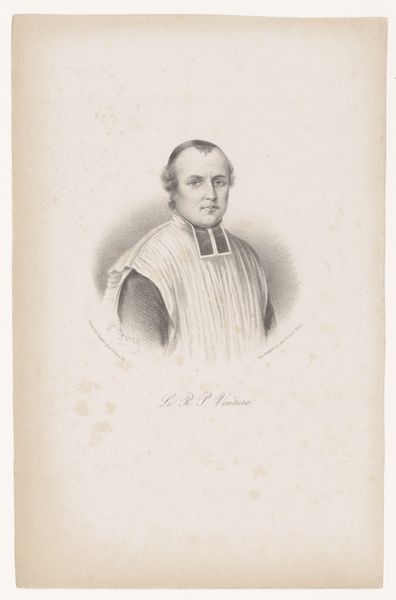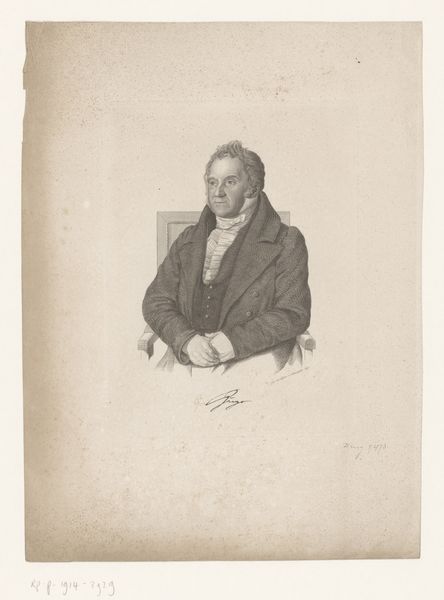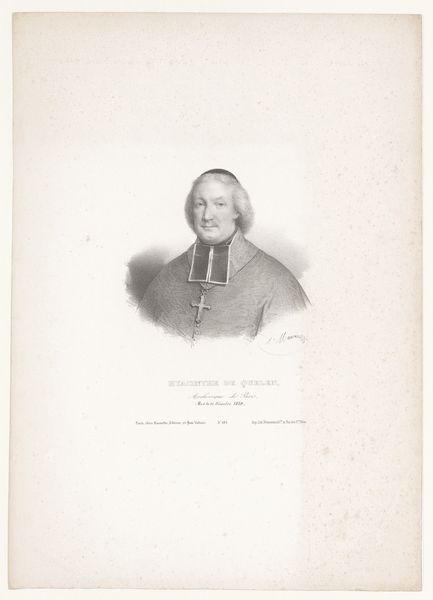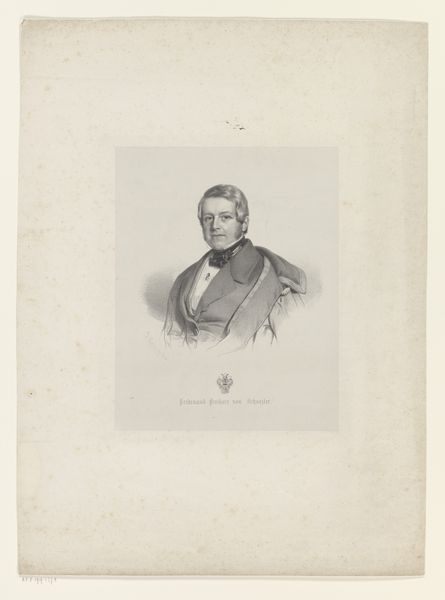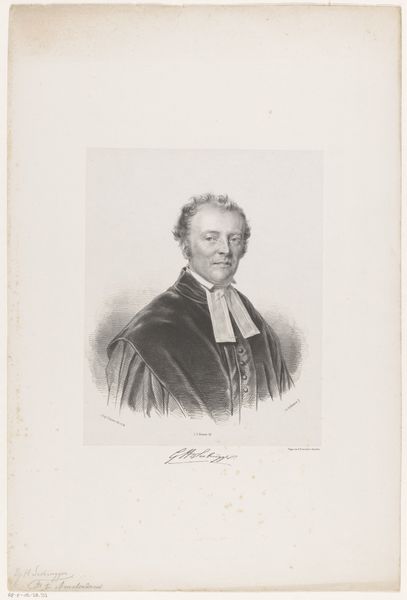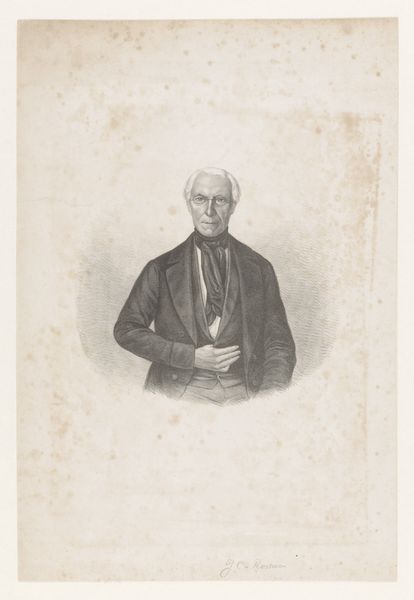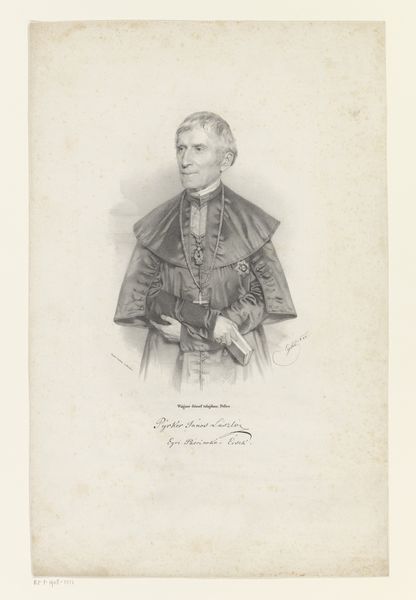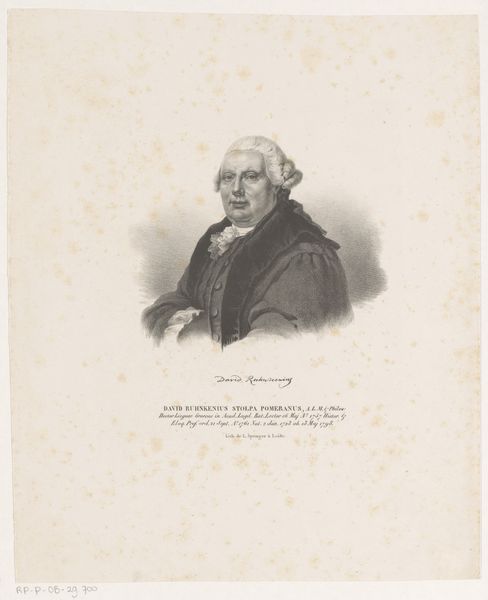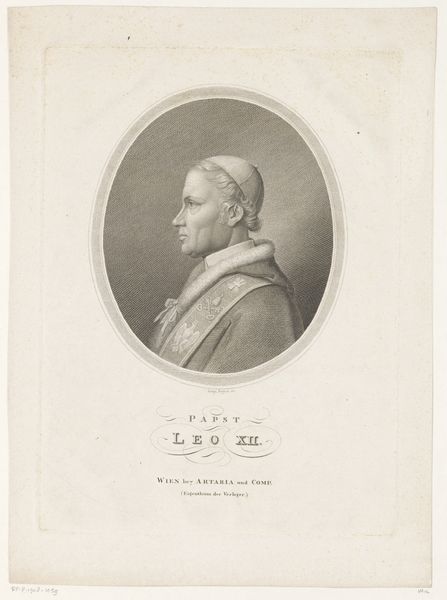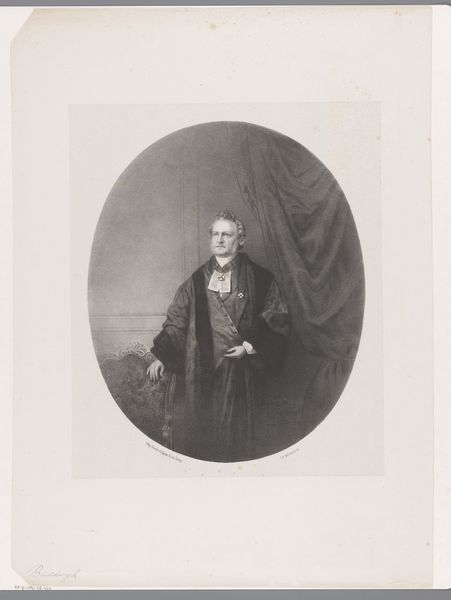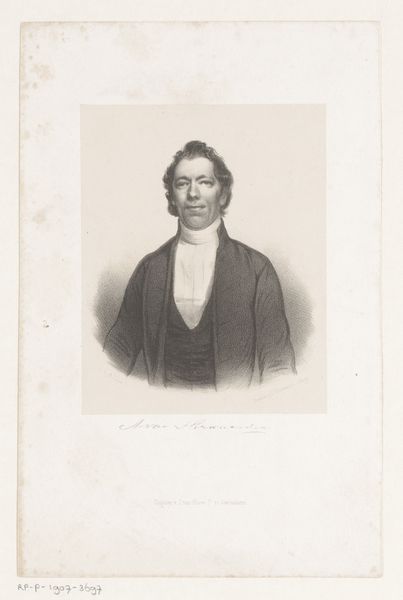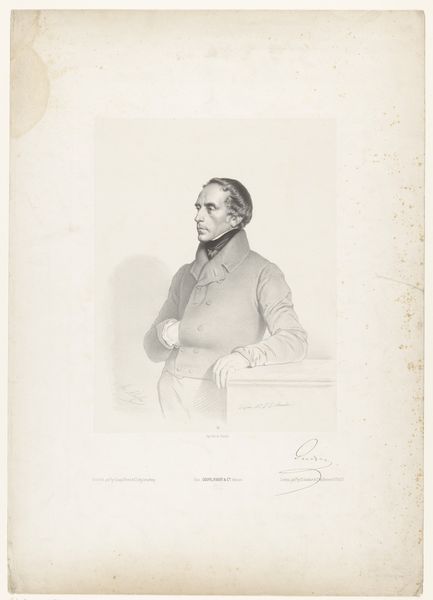
lithograph, print
#
portrait
#
16_19th-century
#
lithograph
# print
#
figuration
#
history-painting
#
academic-art
#
realism
Dimensions: 425 mm (height) x 310 mm (width) (bladmaal)
Curator: Looking at this lithograph from 1850, we see a portrait of Peter Christian Stenersen Gad, a significant figure in his time. It resides here at the SMK, Statens Museum for Kunst. Editor: My first thought is that it projects a strong sense of authority, doesn’t it? The high collar, the serious expression… He’s presenting a very specific image of power and respectability. Curator: Absolutely. That high collar, the severe gaze—those were conscious choices in constructing a public persona. The use of lithography itself, as a relatively new and accessible medium at the time, suggests an intent to circulate this image widely. We have to consider, who was Stenersen Gad, and what image was he trying to project within the context of 19th-century Danish society? Was this about reinforcing existing social hierarchies? Editor: I’m also drawn to the almost severe simplicity. It's very stripped down, monochrome... yet the lines and forms are so well-defined. It reminds me of the way religious figures are depicted in older engravings - the same unflinching directness. Perhaps that echoes his status within his community, almost like a moral leader, presented with little to no embellishment. Curator: A crucial observation. Let’s dig into the symbolism of his attire. The dark robe, punctuated by the small cross. The way the light catches on his face, giving him an almost saintly glow...These elements are not accidental; they are communicating something very deliberate about his standing in society, about his morality and social position. What were the implications of representing oneself in this manner in that historical moment? Editor: Looking at this now, I see how much emphasis is on the face, all that careful rendering. It's like an invitation to delve into his mind, to try and understand his inner self through visual clues. He seems to want to impress with his serious character and strength of will. The very sparseness serves the purpose of amplifying that character. Curator: It forces us to consider who held the power to have their image preserved and circulated, and how such images played into maintaining established power structures, in an era where democratization and societal reform were increasingly at stake. Editor: It certainly provides a lot of context for how the upper crust wanted to be viewed and remembered, through specific iconography. A study of how values were represented at that moment in history, now etched in stone, literally and figuratively! Curator: Absolutely. And examining these visual markers within that historical landscape helps us understand the enduring influence of those power dynamics. Editor: Indeed, seeing the visual lexicon of authority so carefully constructed in the print, casts new light on how individuals use their representation in art, even today.
Comments
No comments
Be the first to comment and join the conversation on the ultimate creative platform.
